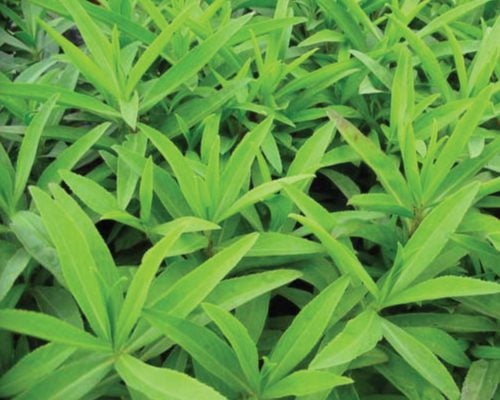
Learning Download: How to Grow Tarragon
From Seed to Harvest: A beginner’s guide to growing tarragon
Tarragon is a licorice-flavored herb that is often used to flavor meats or egg dishes. It is used both fresh and dried. Tarragon is a hardy herb usually grown for its leaves and their aromatic flavor. Tarragon plants can reach up to 3 feet tall. The herb has long, light green leaves and yellow or white flowers.
To plant:
Tarragon is best grown from cuttings or divisions, but it can be started from seed as well. Begin tarragon seeds indoors in April and sow four to six seeds per pot in moist, composted potting soil. Once seedlings sprout a few inches, thin them to one seedling per pot. Russian tarragon can be grown from seed, but French tarragon is only grown from division, stem cuttings or layering.
To grow:
Transplant tarragon seedlings outdoors once the lat frost has passed. Tarragon grows best in full sun in soil with a pH of 6.5 to 7.5. Upon transplanting them outside, space tarragon plants 18 to 24 inches apart if planting in the garden. Because of its great root system, tarragon can thrive in poorer soils. Once the plats have become established, they do not require frequent watering unless there is a drought. Prune the plant frequently t keep it at a preferred height of 2 feet and to prevent flowering. Spread mulch around the plants in the fall to help them overwinter. If worried about the winter climate, bring tarragon indoors over the winter to continue its growth.
Divide the tarragon plants every three to five years to ensure its best growth. When weeding tarragon, take caution as its root system is shallow and aggressive weeding can damage the plant’s roots. Since most insects and pests dislike tarragon’s aroma, it makes for a good companion plant, especially for eggplant. In addition to warding off pests, tarragon is known for causing better growth in the companion plants grown near the herb.
To harvest:
Both the leaves and the flowers of tarragon can be harvested and are usually ready for harvest in the late summer. Tarragon typically doesn’t display much aroma as it grows, but once it is harvested, the oils concentrate in the leaves, making its aroma stronger. Harvest tarragon in the morning and do so by stripping the lower leaves from the stem first.
What tarragon craves:
Prior to planting tarragon, outdoors or transplanting it, mix 1 to 2 inches of compost into the top 6 inches of soil and add 1/2 tablespoon of an all-purpose fertilizer per square foot. After planting, there is no need to fertilize as tarragon’s flavor will intensify in low-nutrient soil.
Where to buy tarragon seeds:
You can fin tarragon seeds at Urban Farmer.

